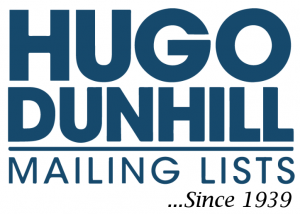How do you compile your lists?
Lists are compiled from membership rosters, registrations, public records, licenses, corporate & executive registers, postal records, surveys, questionnaires, census data, student lists, birth records, voter registrations, telemarketing efforts, mail & telephone inquiries and purchase information, telephone directories, rebate coupons, subscriber order forms, warranty card registrations, entry forms, credit & financial data, SEC listings, institution information, conference/trade show/seminar attendee registrations, government records, opt-in email responses, applications, and rating & licensing boards. All information is derived from proprietary, self-reported data, or sources of public record. It is obtained legally and ethically under strict list industry rules, regulations, and guidelines.
How often do you update your databases?
Compiled lists are updated monthly or quarterly through original source documentation, postal/subscription/credit changes of address, pander files, suppression files and telemarketing efforts. The lists are also CASS, DSF, PAVE-certified to ensure maximum postal discounting and deliverability.
What is your response rate?
Depending on the list, an average rate of 1% (i.e. 50 out of 5,000). This can vary considerably, depending on the list or your offer. Once someone buys from you, your response rate to that person will go up substantially, usually 5 to 6 times higher than a cold prospect name. On a non-response file (a compiled file, people who do not necessarily buy anything) it may be lower.
Why should I do business with your company?
- We focus on service. We have more than 60 years of experience to offer you.
- We have the lowest industry prices.
- Better targeting with more database choices.
- Unlimited free, instant counts/queries.
- Volume pricing.
- Quick pricing and ordering.
- Access to the most up-to-date data available.
- We customize your lists to fit your every need.
- A one-stop list source. We can get you every mailing, telemarketing, fax and
e-mail list available. Learn more about why you should choose HDML.
Do you offer a volume discount?
Yes. Whether you are a frequent, high volume database user or a first-time list buyer, you may qualify for special, discounted pricing. Frequency and volume pricing considerations will be reviewed. Please inquire.
What is the difference between one-time use and unlimited use?
All lists are rented for a one-time use only. All mailing lists are “seeded” with decoy names so HDML will be able to determine if the file is mailed more than once. Lists are also available for unlimited use. The information on each list may be used as many times as the purchaser needs for one year and can be re-purchased for each subsequent year. The extra cost is an additional one-time use base price.
What formats are available?
HDML is able to provide your list to you via email, FTP, and Pressure Sensitive Labels
What does SCF mean?
Sectional Center Facility (SCF) is a postal facility that serves as the processing and distribution (P&DC) for post offices in a designated geographic area as defined by the first 3 digits of the zip codes of those offices. Some SCFs serve more than one 3-digit zip code range.
What is an SIC Code?
Standard Industrial Classification (SIC) codes are four digit numerical codes assigned by the U.S. government to business establishments to identify the primary business of the establishment. The classification was developed to facilitate the collection, presentation and analysis of data, and to promote uniformity and comparability in the presentation of statistical data collected by various agencies of the federal government, state agencies and private organizations. The classification covers all economic activities: agriculture, forestry, fishing, hunting and trapping; mining; construction; manufacturing; transportation; communications; electric, gas and sanitary services; wholesale trade; retail trade; finance; insurance and real estate; personal, business, professional, repair, recreation and other services; and public administration.
How do you break down an SIC Code?
The first 2 digits of the code identify the major industry group, the third digit identifies the industry group and the fourth digit identifies the industry. For example:
36 ELECTRONIC & OTHER ELECTRICAL EQUIPMENT
367 ELECTRONIC COMPONENTS & ACCESSORIES
3672 PRINTED CIRCUIT BOARDS
NOTE:
The digit “9” is used in the third or fourth digit position of the classification code to designate miscellaneous industries not elsewhere classified (NEC). These miscellaneous classifications are not comprised of homogenous primary activity groups.
They are grouped together and treated as a separate industry in order to retain the homogeneity of the other industries in the group.
What is a CASS Report?
Coding Accuracy Support System (CASS)- A system offered to mailers, service bureaus and software vendors that improves the accuracy of matching to delivery point codes, Zip+4 codes, 5 digit zip codes and carrier route codes on mail pieces. CASS provides a common platform to measure the quality of address matching software and to diagnose and correct software problems. Hugo Dunhill takes Zip+4 verification one step further by flagging addresses that do not exist as a valid delivery point using Deliverability Point Validation (DPV) and LACS (Locatable Address Correction Service) technology.
Send your questions to sales@hdml.com and one of our representatives will contact you as soon as possible with an answer.



